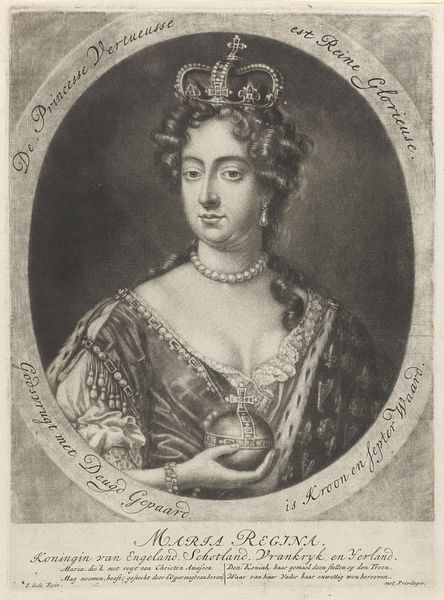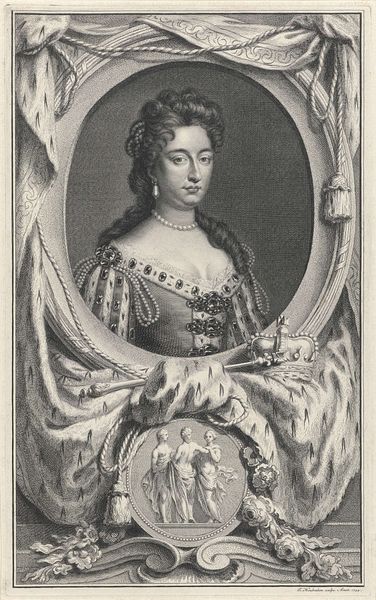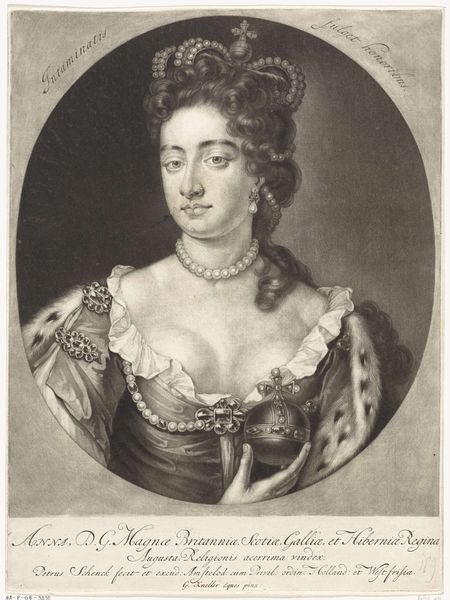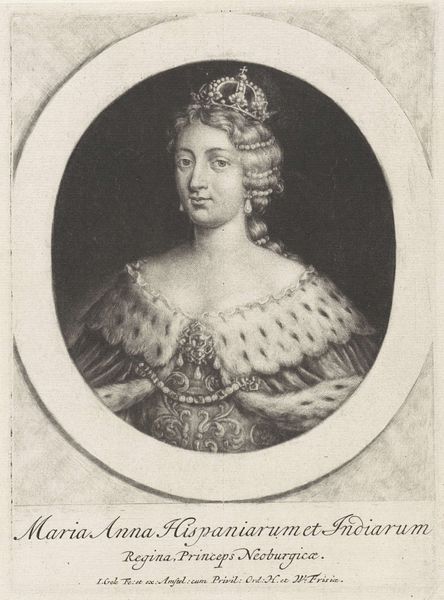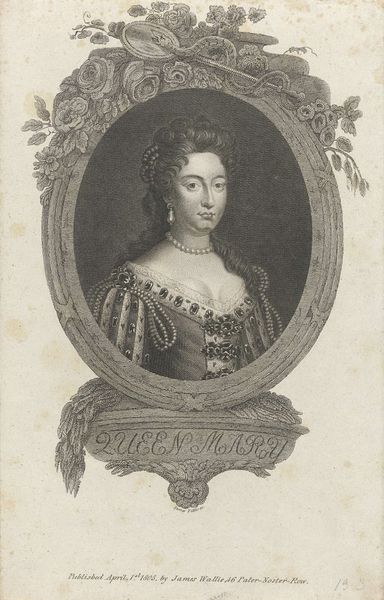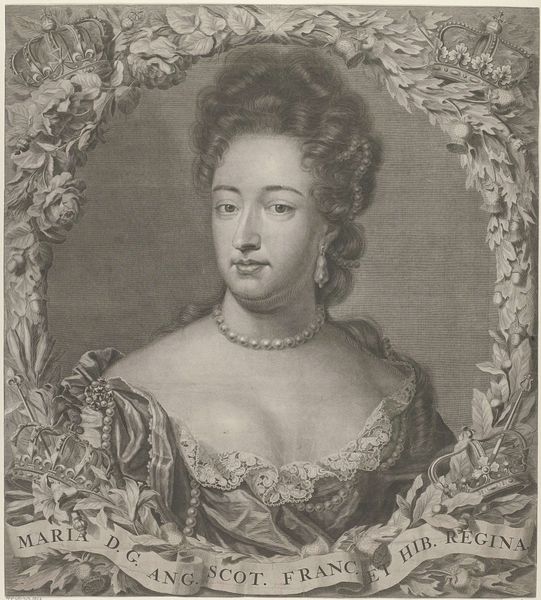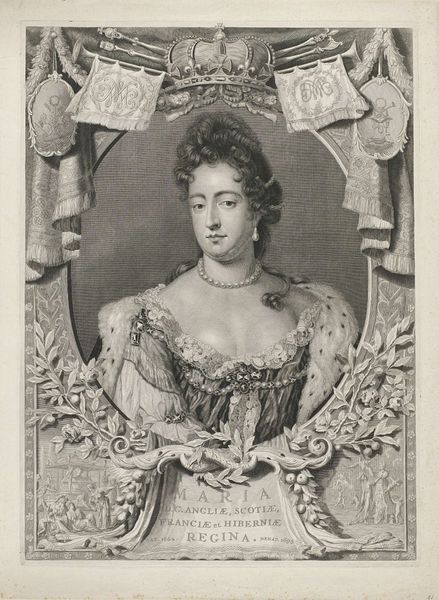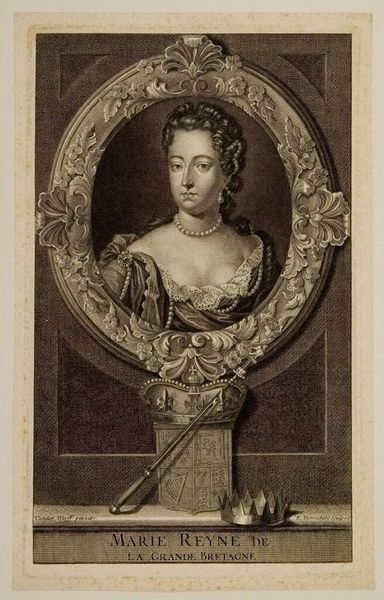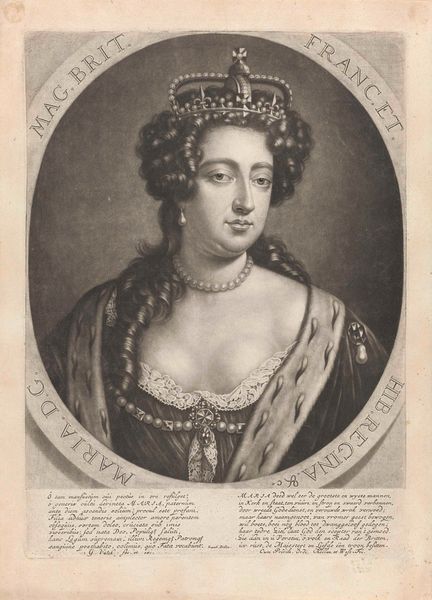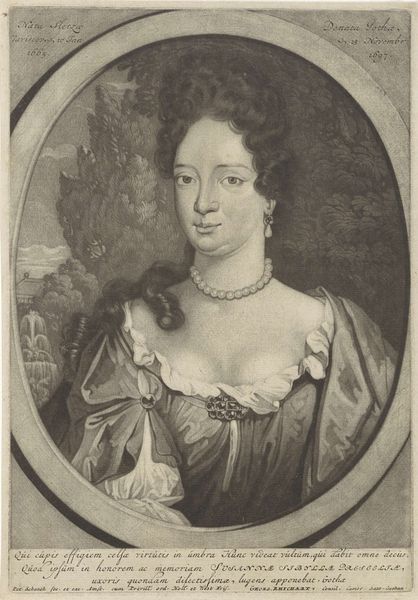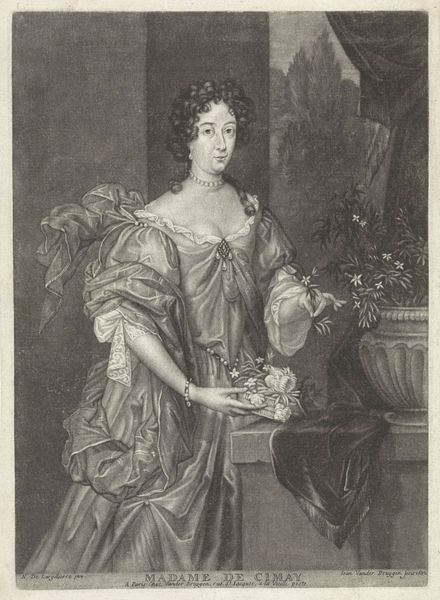
print, engraving
#
portrait
#
baroque
# print
#
old engraving style
#
figuration
#
line
#
history-painting
#
engraving
Dimensions: height 301 mm, width 188 mm
Copyright: Rijks Museum: Open Domain
Editor: This is a portrait of Mary II Stuart, likely created between 1695 and 1724 by Jacob Gole. It's an engraving, so a print, and it has such fine, delicate lines. I find the sitter's gaze rather severe, but the frame around her is bursting with figures and ornamentation. How do you interpret this work? Curator: This piece speaks volumes about the construction of female power in the late 17th and early 18th centuries. Notice how Mary is presented, framed not just by ornamentation, but also by symbolic allegories. What message do you think the artist is trying to convey about her legitimacy and authority? Editor: Well, the text gives her titles "Queen of England, Scotland, France and Ireland," so it’s clearly about establishing her regal position. But is there more beyond this declaration? Curator: Consider the role of women in power at that time. Mary ruled jointly with her husband, William. Prints like this weren't just about depicting an individual; they were carefully constructed pieces of political communication, especially as Mary herself had gained the throne through complex familial and political machinations. Note the text at the bottom of the print too. How do you think this narrative influenced public perception, and potentially, her own self-perception? What constraints or opportunities did her gender present? Editor: So, it’s not just a portrait, it's a statement about her role and perhaps even a negotiation of her power as a woman ruler in a patriarchal society. It's really clever how this combines the personal with the political. Curator: Exactly. By understanding these layered contexts, we can unpack the subtle but powerful ways in which art participates in shaping our understanding of history and gender. It also asks how much control she really had over how she was presented to her own subjects. Editor: This really makes me consider the power dynamics at play in the creation and reception of this image. Thanks for making that clear!
Comments
No comments
Be the first to comment and join the conversation on the ultimate creative platform.

